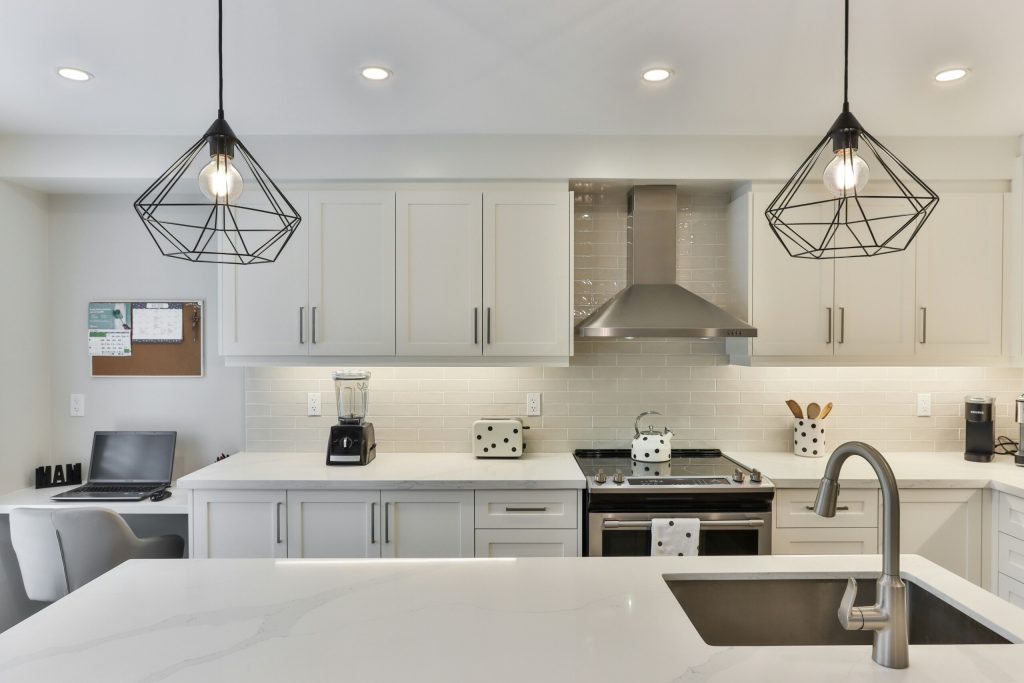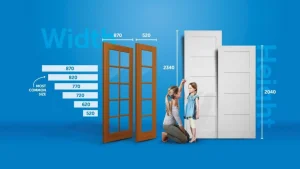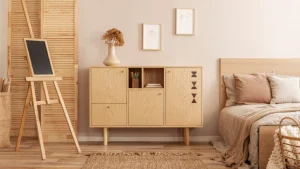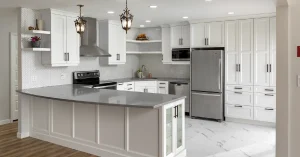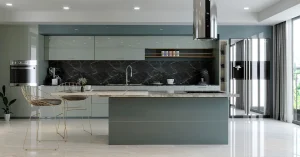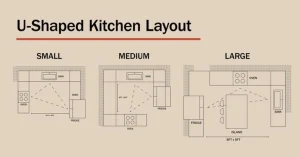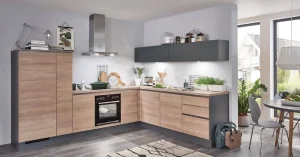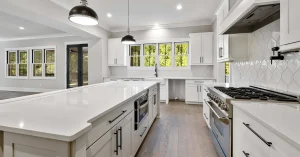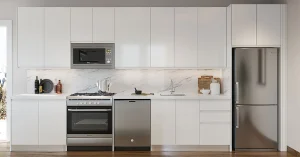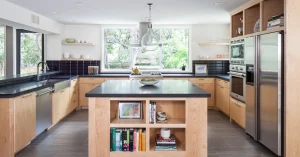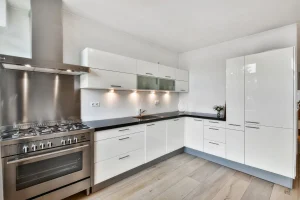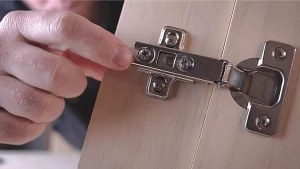Lighting plays a pivotal role in determining the appearance of your kitchen cabinets. The way light interacts with the color and finish of your cabinets can dramatically change their look, creating different moods and enhancing or diminishing the overall aesthetic of your space. Understanding how lighting affects cabinet color is crucial when designing or renovating your kitchen.
1. Natural Light vs. Artificial Light
- Natural Light: Sunlight changes throughout the day, affecting cabinet colors‘ perception. In the morning, cooler, blue-tinted light may make cabinets appear lighter and cooler. As the day progresses, warmer, yellow-tinted sunlight can bring out warmer hues in your cabinets. Consider how much natural light your kitchen receives when selecting cabinet colors.
- Artificial Light: The type of artificial lighting in your kitchen also impacts cabinet color. LED, incandescent, and fluorescent lights all emit different color temperatures, ranging from cool to warm. Cooler lights can make colors appear more muted, while warmer lights can enhance rich tones.
2. Color Temperature
- Warm Lighting (2700K-3000K): Warm lighting brings out cabinets’ red, orange, and yellow undertones. It can make dark wood cabinets feel richer and more luxurious, but it can also cause lighter cabinets to appear slightly yellowed.
- Cool Lighting (3500K-5000K): Cool lighting emphasizes blue, green, and gray tones, making cabinets with cool undertones pop. However, it can make warmer colors look washed out or less vibrant.
3. Lighting Placement and Direction
- Overhead Lighting: Overhead lights can cast shadows, affecting the color on upper and lower cabinets. Darker cabinets may appear even darker under direct overhead lighting, while lighter cabinets can reflect more light and appear brighter.
- Under-Cabinet Lighting: Installing lights beneath your cabinets can highlight the backsplash and countertops, but it can also affect the color of the cabinets themselves. Depending on the bulb’s color temperature, under-cabinet lighting can either enhance the true color of the cabinets or alter it slightly.
4. Finish and Reflectivity
- Glossy Finish: Cabinets with a glossy finish reflect more light, making the color appear brighter and more vibrant. However, they can also show reflections of light sources, which may alter the perceived color in different areas of the kitchen.
- Matte Finish: Matte cabinets absorb more light, which can make the color appear deeper and more consistent. This finish is less affected by reflections but can make a space feel darker, especially if the color is already deep or muted.
5. Testing Before Commitment
- It’s essential to test cabinet colors under various lighting conditions before making a final decision. Use sample swatches and view them in your kitchen at different times of the day and under different lighting setups. This will help you understand how the color interacts with the lighting in your space, ensuring you achieve the desired effect.
Conclusion
Lighting is a powerful element in kitchen design, significantly influencing how cabinet colors are perceived. By considering the type of lighting, its placement, and the finish of your cabinets, you can create a kitchen that not only looks beautiful but also feels cohesive and inviting. Take the time to experiment with different lighting scenarios to find the perfect combination that enhances your chosen cabinet color.
Ready to transform your kitchen with the perfect cabinet color and lighting combination? At US Kitchen Cabinet, we offer expert guidance and high-quality cabinets to help you achieve the look you desire. Contact us today to explore our wide range of cabinet options and start designing your dream kitchen!
